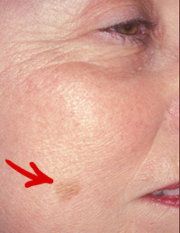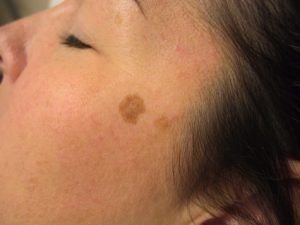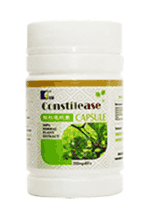
They come almost unnoticed



Age spots occur when the top surface layer of skin expands with more pigment and develops what looks like a large freckle. One may appear by itself, or a few may be clustered together.
Age spots are the result of an excess production of melanin, or skin pigment. Doctors don’t always know why age spots develop. Skin aging, sun exposure, or other forms of ultraviolet (UV) light exposure, such as tanning beds, are all possible causes. You’re most likely to develop age spots on the areas of your skin that receive the most sun exposure, including:
• your face
• the back of your hands
• your shoulders
• your upper back
• your forearms
People of any age, sex, or race can develop age spots. However, age spots are more common in people with certain risk factors. These include:
a. Being older than 40 years old
b. Having fair skin
c. Having a history of frequent sun exposure
d. Having a history of frequent tanning bed use
Wondering how you can prevent Age Spots?
Well, you can’t always prevent age spots. However, you can reduce your chances of getting them by doing the following:
1. Avoid the sun between 10 a.m. and 3 p.m., when the sun’s rays are most intense.
2. Wear a sunscreen every day. It should have a sun protection factor (SPF) rating of at least 15 and contain both UVA and UVB protection.
3. Apply sunscreen at least 30 minutes before sun exposure. Reapply every two hours, more often if swimming or perspiring.
4. Wear protective clothing such as hats, pants (trousers), and long-sleeved shirts. These help protect your skin from UV rays. For the best protection, wear UV-blocking clothes with an ultraviolet protection factor (UPF) of at least 40 or 50.
Age spots:
a. range from light brown to black in color
b. have the same texture as the rest of your skin
c. are painless
d. are usually on sun-exposed areas of the skin, e.t.c.
1. Some people have a hereditary predisposition to age spots. Age spots may develop at an early age, even in childhood, though they are more common in older people, especially in those who have spent too much time in the sun.
2. Age spots are not cancerous, nor do they lead to cancer. However, on skin exposed to the sun, they may be accompanied by precancerous scaly, red elevations called actinic keratoses. Dark spots, which may be cancerous, may also appear to be lentigines. All of these blemishes should be evaluated by a dermatologic surgeon.
3. Age spots are harmless changes to the skin and don’t cause pain. On rare occasions, age spots can make skin cancer more difficult to diagnose. The appearance of age spots can cause emotional distress to some people. You can often remove or reduce them with treatment.
Do you have age spots on any part of your skin? Don't panic; help is on the way.
To get rid of Age Spots, totally, and without side-effects, you should use Terainz Healthcare Age spots treatment Pack, which is a Natural Herbal Product, consisting Constilease.
Note: All Constilease is a natural herbal product which do not have any side effects when used. There are many testimonies which have been recorded as a result of the use of this product to treat Age spots.
To find out everything there is about Constilease and discover how it can help in Treating Age spots.

Share This Article!